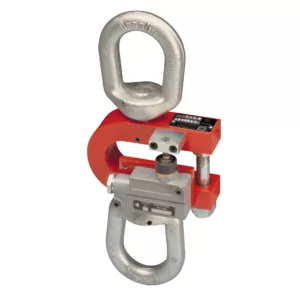 Load limit switches are crucial tools to protect against overload and ensure the capacities of cranes and hoists are not exceeded. To protect personnel and equipment on your worksite, you need a reliable, accurate, and durable load limit switch like the Dillon DynaSwitch. In this buyer’s guide, our experts have assembled all the information you might need to know before purchasing a DynaSwitch.
Load limit switches are crucial tools to protect against overload and ensure the capacities of cranes and hoists are not exceeded. To protect personnel and equipment on your worksite, you need a reliable, accurate, and durable load limit switch like the Dillon DynaSwitch. In this buyer’s guide, our experts have assembled all the information you might need to know before purchasing a DynaSwitch.
What are load limit switches used for?
Load limit switches like the DynaSwitch are used to ensure that the capacities of cranes and hoists are not exceeded. They can also be used as load detection devices, and be programmed to send a signal or sound an alarm when a specified load setting is reached.
The DynaSwitch offers 24/7 monitoring capabilities, constantly tracking the load levels of your equipment and triggering anything from a warning alarm to a complete system shutdown when overload conditions are reached.
How can the DynaSwitch improve safety on my worksite?
Load limit switches are required by OSHA to ensure personnel safety. They also extend the lifespan of your equipment and reduce maintenance costs by ensuring you never exceed the capacity of your crane.
The DynaSwitch achieves an ultimate safety factor of 5:1, and includes an overload stop or bolt to provide extra protection.
What are microswitches used for?
The DynaSwitch can be configured with up to 4 microswitches, which can:
- Alert operators when a predefined minimum load or “slack” line is reached
- Alert operators when a predefined load threshold is reached
- Alert operators when a predefined maximum load is reached
- Automatically shut down machinery when cables reach a predefined minimum load
- Automatically shut down machinery when cables reach a predefined maximum load
Are DynaSwitches mechanical or digital?
Unlike other load limit switches, the DynaSwitch is an entirely mechanical device, meaning it doesn’t require batteries. The DynaSwitch works off the deflection of a pressure bar. During calibration, a specified load is applied to the pressure bar, and the microswitches within the unit are adjusted to open or close a circuit when that load is reached.
There are a variety of advantages to a mechanical load limit switch: it doesn’t operate on battery, meaning it won’t die, and it’s also less likely to glitch or fail. Other load limit switches use a load cell connected to a sensor and motor, creating more opportunities for failure. With the DynaSwitch, you can simply clamp it inline to your cable and it’s ready to measure.
The mechanical DynaSwitch is also more cost-effective than load-cell-based switches.
How is the DynaSwitch installed?
The DynaSwitch is an inline load limit switch, meaning it is installed by cutting into a cable and attaching the top and bottom fixtures to the cable.
DynaSwitches are commonly installed at the dead end of a line, but if this is not possible, they may be used to support an equalizer sheave or suspend an entire hoist.
How do I determine the correct load limit settings?
The load limit settings depend on the number of line parts. Typically, when installed at the dead-end of the line, divide the ultimate hoist capacity by the number of line parts to determine the load limit for each microswitch.
Are DynaSwitches durable?
DynaSwitches are exceptionally rugged and durable devices. Many of our customers have been using the same unit for 20-30 years of heavy field work.
Can load limit setpoints be adjusted in the field?
Yes–the DynaSwitch makes it easy to adjust load limit setpoints by simply lifting a known load equal to the maximum capacity of your new setpoint.
Can I use my own fittings?
Yes, you can install your own fittings on the top and bottom of the DynaSwitch. Lifting eyes are the most common fitting, especially for chain hoists that hang from a beam and have a hook that easily attaches to the top and bottom fittings.
Want to learn more?
If you have additional questions about the Dillon DynaSwitch before purchasing, our experts would be happy to help. Contact us today!

